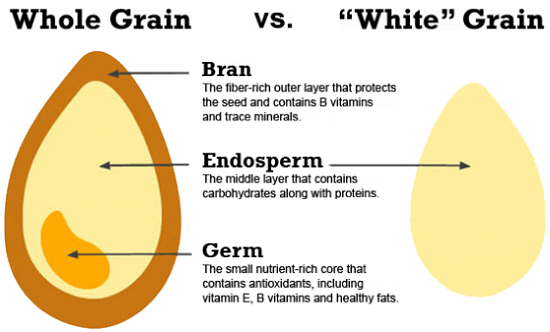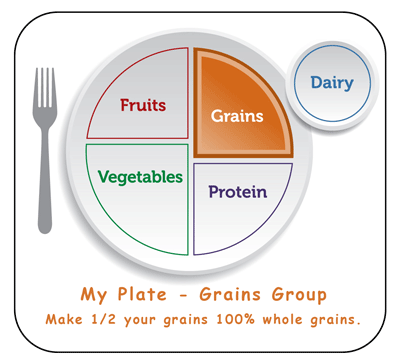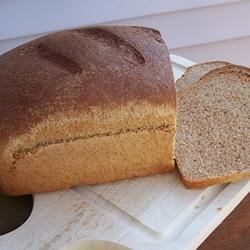Lesson 5. Plant Life Cycle (Page 28)
- Students will identify the 8 stages of the plant life cycle and the unique characteristics of each stage
- Students will identify at what stage different garden crops are ready for harvest
- Extension: food processing. Students can differentiate whole grain versus refined grain, and will know the difference between white grains and whole grains (bran, germ, endosperm).
- Student will be able to describe the benefits of whole grains and list sources of whole grains.
- Students can compare/contrast processed foods, distance from farm to store, and nutrients in canned goods are higher in sodium or potassium as a way of preservation.
- Students know that there are higher amounts of preservatives on fresh fruits and vegetables and they must be washed.
- Students know the health and nutrient difference of whole grains. Students also know the daily recommended intake of whole grains (50%).
Kid-Friendly Wheat Bread
-
Prep: 15 minutes
-
Cook: 45 minutes
-
Ready In: 2 hours 45 minutes
Ingredients
- 1 1/2 cups warm water (110 degrees F/45 degrees C)
- 1 tablespoon brown sugar
- 2 (.25 ounce) envelopes active dry yeast
- 2 cups all-purpose flour
- 4 cups whole wheat flour
- 1/3 cup packed brown sugar
- 2 teaspoons salt
- 1/3 cup vegetable oil
- 1/2 cup milk, room temperature
Directions
- Measure the water into a large bowl, or the bowl of a stand mixer and stir in 1 tablespoon of brown sugar. Sprinkle the yeast over the top and set aside until foamy, about 10 minutes.
- Add 1 cup of the all-purpose flour and 3 cups of whole wheat flour to the bowl along with the brown sugar, salt, vegetable oil and milk. Mix on low speed to blend ingredients. Continue to mix on medium speed, adding the rest of the flour 1/2 cup at a time, until the dough clings to the hook and cleans the sides of the bowl. You may not need to add all of the flour. Mix on medium speed for about 5 minutes. Oil the bowl and turn the dough to coat. Cover loosely and set aside to rise until doubled, about 1 hour.
- Punch down the dough and place on a floured surface. Divide into two equal portions and use a rolling pin to roll each one into a rectangle that is about 16×8 inches. Be sure to press out all of the air bubbles. Roll the rectangles into loaves and pinch the seam together.
- Place loaves seam side down into greased 9×5 inch loaf pans. Cut a few slits across the top of each loaf using a sharp serrated knife. Set aside to rise until your finger leaves a dimple when you press into a loaf, 30 to 45 minutes. Preheat the oven to 400 degrees F (200 degrees C).
- Bake the loaves for 15 minutes in the preheated oven, then reduce the temperature to 350 degrees F (175 degrees C). Bake for an additional 30 minutes, or until loaves are deep brown. Remove from pans to cool on a wire rack.
Core Curriculum Standards
Reading Standards for Informational Text: (RI)
- 1.1- 6.1: Ask and answer questions about key details in a text.
- 1.2- 6.2: Identify the main topic and retell key details of a text.
- 1.3- 6.3: Describe the connection between two individuals, events, ideas, or pieces of information in a text.
- 1.7- 6.7: Use the illustrations and details in a text to describe its key ideas.
Reading Standards: Foundational Skills: (RF)
- 1.4- 6.4: Read with sufficient accuracy and fluency to support comprehension.
Writing Standards: (W)
- 1.2-6.2: Write informative/explanatory texts to examine a topic and convey ideas and information clearly.
Speaking and Listening Standards: (SL)
- 1.4- 6.4: Report on a topic or text, or present an opinion.
- 1.1- 6.1: Participate in collaborative conversations with diverse partners about topics and texts with peers and adults in small and larger groups.
Language Standards: (L)
- 1.1-6.1: Demonstrate command of the conventions of standard English grammar and usage when writing or speaking.




